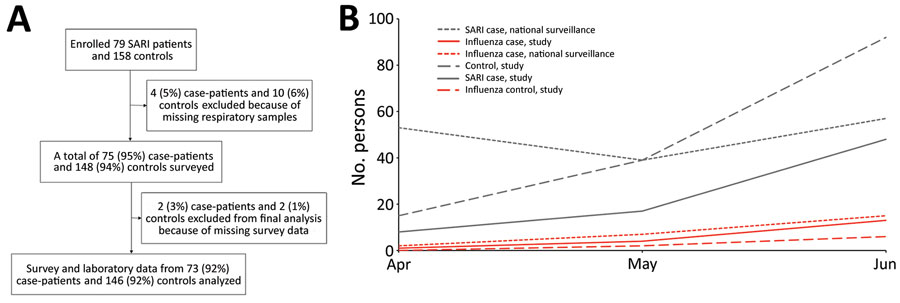Volume 27, Number 1—January 2021
Research Letter
Etiology of Severe Acute Respiratory Infections, Bangladesh, 2017
Figure

Figure. Participant enrollment in study of etiology of severe acute respiratory infections and influenza activities in Bangladesh, April–June, 2017. A) Enrollment of adults with severe acute respiratory infections (SARI) and their corresponding controls. B) Influenza activities, study (April 10−June 21) and national surveillance (April–June). Percentages might not sum to 100 because of rounding.
Page created: October 05, 2020
Page updated: December 21, 2020
Page reviewed: December 21, 2020
The conclusions, findings, and opinions expressed by authors contributing to this journal do not necessarily reflect the official position of the U.S. Department of Health and Human Services, the Public Health Service, the Centers for Disease Control and Prevention, or the authors' affiliated institutions. Use of trade names is for identification only and does not imply endorsement by any of the groups named above.